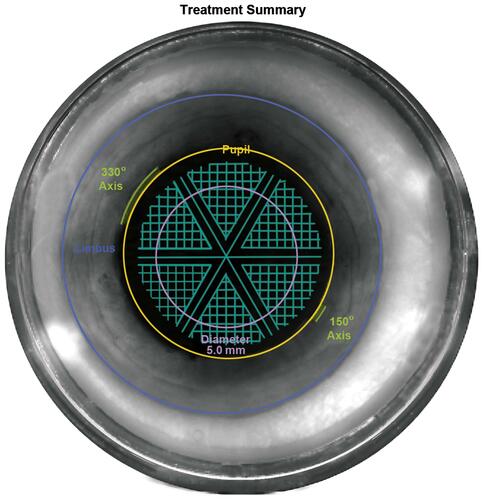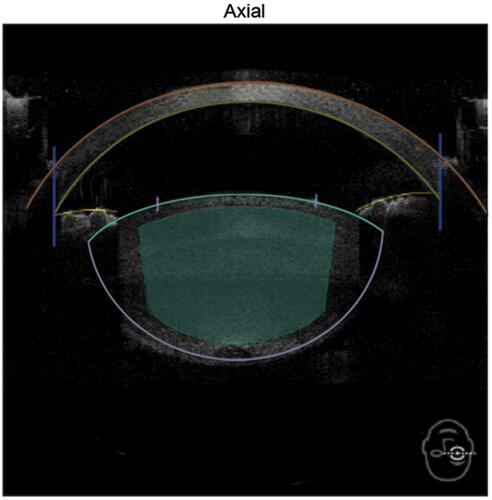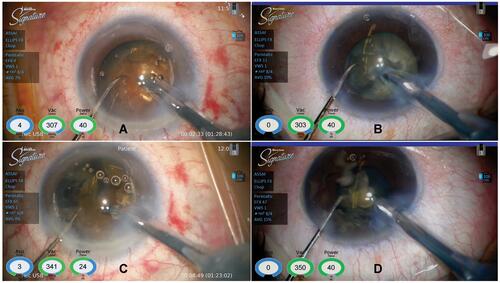Figures & data
Figure 2 Lens fragmentation used in all cases in the FLACS group: sextants with lens softening, grid spacing 350 µm, seg-soft spacing 200 µm.

Table 1 Age differences among cases in FLACS and CPS groups and their subgroups
Table 2 Intraoperative parameters in FLACS and CPS groups
Table 3 Intraoperative parameters in FLACS and CPS subgroups



